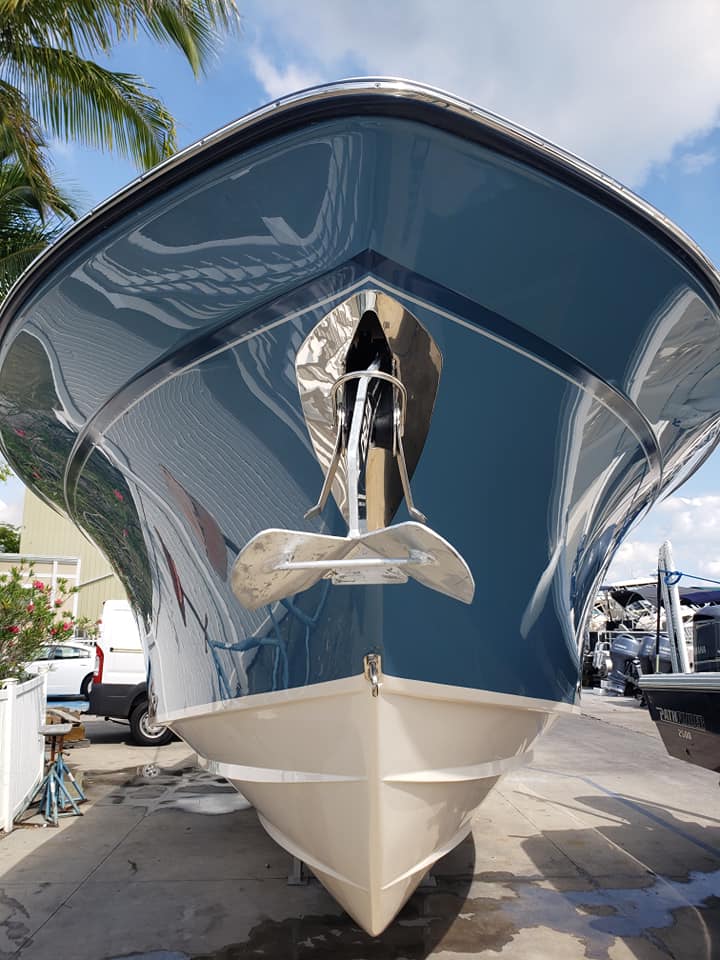Protect Your Boat and Car with Davinci Detail Boat & Car Ceramic Coating
Protect Your Boat and Car with Davinci Detail Boat & Car Ceramic Coating
Blog Article
The Ultimate Guide to Recognizing Auto Ceramic Finishing and Its Advantages
Vehicle ceramic coating has become a critical development in automotive treatment, using a robust protective layer that improves both looks and long life. Comprehending the scientific research behind this modern technology, specifically its make-up and bonding devices, is vital for any kind of lorry proprietor considering this investment. Past simple gloss, the benefits include functional upkeep and environmental management. An extensive assessment reveals vital considerations when determining between DIY application and professional installation. What elements should you evaluate before making this choice? The implications might significantly influence your selection and the utmost security of your automobile.
What Is Ceramic Finishing?
Ceramic finish is a liquid polymer applied to the external surface areas of a car, providing a resilient protective layer that improves both appearance and durability. Made up mainly of silicon dioxide (SiO2), this sophisticated solution creates a chemical bond with the automobile's paint, creating a resistant obstacle versus ecological pollutants.
Among the primary advantages of ceramic finish is its ability to drive away water and dirt, making maintenance significantly easier. The hydrophobic properties of the layer reason water to bead up and roll off, taking dust and gunk with it. This not only maintains the lorry cleaner for longer durations yet additionally reduces the regularity of washes called for.
In addition, ceramic finishings offer considerable UV security, protecting against oxidation and fading of the paint in time. This characteristic is important for keeping the car's aesthetic appeal and resale worth. Additionally, ceramic coatings can protect versus small scrapes and swirl marks, supplying a level of protection that typical waxes and sealants can not match.
How Ceramic Layer Functions

Upon treating, which can take a number of hours to days depending on the product, the coating solidifies right into a flexible, glass-like layer. This layer provides an impermeable barrier against pollutants such as dust, crud, and toxic wastes - Davinci Detail Boat & Car Ceramic Coating. In addition, the ceramic covering's hydrophobic buildings allow water to bead and roll off the surface area, minimizing the build-up of dust and making cleaning significantly easier

Benefits of Ceramic Covering
The application of ceramic finishes offers countless benefits that look at here expand past plain visual appeals. Ceramic finishes develop a hydrophobic surface, warding off water, grime, and dirt, which makes the lorry much easier to clean and maintain. Davinci Detail Boat & Car Ceramic Coating.
In addition, ceramic coatings are immune to chemicals and oxidation, protecting the car from tree sap, bird droppings, and other corrosive materials. This resistance assists keep the integrity of the car's finish, ultimately extending its life-span and resale value.
Additionally, ceramic coverings give a shiny appearance that improves the auto's total appearance, offering it a showroom-quality luster. The longevity of these layers, typically enduring several years with proper upkeep, also provides an economical solution compared to conventional shaving or sealers.
Lastly, the convenience of cleansing surface areas treated with ceramic finishings substantially decreases the time and initiative invested in automobile maintenance. With these advantages, ceramic coatings have actually come to be a prominent selection for auto lovers and day-to-day drivers alike.
DIY vs. Expert Application
Choosing in between Do it yourself and expert application for ceramic coatings includes weighing numerous aspects, including ability level, time commitment, and preferred results. It requires a complete understanding of the application procedure, consisting of surface prep work, product choice, and healing times.
On the various other hand, specialist application makes sure a top notch coating and longevity. Specialists have the experience and specialized tools required to prepare the vehicle and use the finish correctly. They can also address and determine surface area imperfections that may affect the covering's performance, which an untrained eye may neglect.
In addition, the moment commitment for a do it yourself job can be substantial, as correct application is labor-intensive and requires perseverance to attain ideal results. In comparison, an expert solution generally finishes the job a lot more successfully, allowing you to enjoy the benefits of ceramic coating earlier. Eventually, the choice must straighten with your comfort level, budget plan, and the significance you position on achieving a perfect coating.
Upkeep Tips for Ceramic Finishing
Appropriate upkeep see post of ceramic layer is necessary to maintain its safety top qualities and visual charm. To maintain the honesty of the coating, regular cleaning is essential. Use a pH-neutral car shampoo and a soft microfiber wash mitt to avoid damaging. Avoid automatic auto cleans with rough brushes that can break down the coating over time.
After cleaning, it is a good idea to dry out the automobile with a clean microfiber towel to avoid water places. Additionally, think about executing a maintenance laundry every few weeks, depending upon environmental conditions, to get rid of impurities like dirt, bird droppings, and tree sap that can bond to the surface.
Using a ceramic coating-specific booster or spray here are the findings sealant can enhance the coating's hydrophobic homes and maintain its gloss. It is also crucial to stay clear of utilizing rough cleaners or waxes that may endanger the layer's efficiency.
Lastly, conduct periodic examinations for any indications of deterioration or damages. A specialist detailer can examine the circumstance and recommend suitable corrective measures if the layer shows indicators of wear. Adhering to these maintenance tips will guarantee your ceramic finish continues to be effective and maintains your automobile looking excellent.

Final Thought
In verdict, cars and truck ceramic coating serves as an advanced protective service for lorry outsides, using considerable benefits such as improved resilience, resistance to ecological pollutants, and simplified upkeep. Eventually, ceramic finish gives a valuable investment in protecting the aesthetic and architectural stability of cars over time.
A ceramic layer works by using a complex chemical procedure that involves bonding with the automobile's paint at a molecular level. Ceramic coverings create a hydrophobic surface area, repelling dust, gunk, and water, which makes the car simpler to keep and cleanse. Adhering to these maintenance pointers will guarantee your ceramic layer continues to be efficient and keeps your car looking excellent.
In verdict, vehicle ceramic finishing offers as an innovative safety option for vehicle outsides, offering considerable advantages such as boosted durability, resistance to ecological impurities, and simplified maintenance. Ultimately, ceramic covering offers a useful financial investment in preserving the structural and aesthetic stability of lorries over time.
Report this page